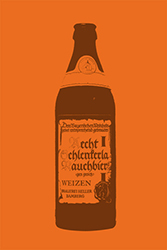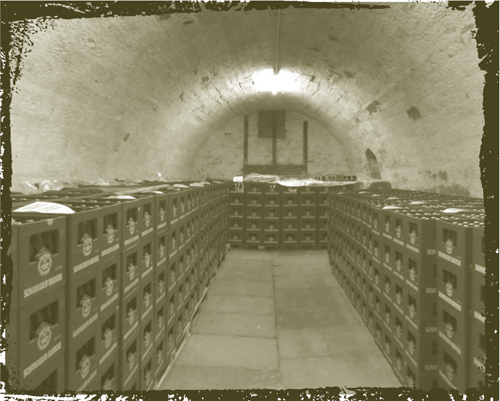

Tart German Wheat Ales: Berliner Weisse and Gose
Wheat and barley have an ancient and entwined history. Seeds from the two wild grasses were originally harvested in Mesopotamia and both have been used to make bread and beer for millennia. The grains are packed with the nutrients and carbohydrates that fueled the rise of civilization, both in liquid and baked forms. Sumerians brewed with ancient varieties of wheat and barley, and the Egyptians were also famous for their wheat beer. As beer spread to Europe, wheat became more refined, eventually evolving into the variety we know today. All the while, brewers were adding it to their mashes. Even as late as the seventeenth century, it was rare to find a beer made exclusively of barley; wheat regularly composed a quarter to two-thirds of the grist in many recipes.
But wheat and barley are not exactly the same. Wheat has more protein than barley, and 80 percent is sticky, elastic gluten—perfect for making dough that will rise into pillowy loaves of bread. Gluten is, however, less prized in brewing, where “sticky” is not a favored quality. For the brewer, there’s an important anatomical difference as well. Barley has husks that act as a natural filter in the grain bed. Wheat doesn’t; when ground and soaked in water, the result looks something like paste.
Barley’s advantages and deficits are inverted. Its lower levels of gluten produce brighter beer, and because barley is richer in enzymes, its starches more easily convert to sugar. But when it comes to baking, having less gluten means barley dough doesn’t rise. Barley flour can be turned into tasty flatbreads, but they are harder and less elegant than their wheaten cousins.

Bottles of Schneider Aventinus Weizenbock age in a cool cellar.
Both bread makers and brewers used blends to combine the strengths of the two grains. Over time, though, users of wheat and barley started specializing. Wheat started being reserved for the oven; barley, for the brew kettle. Governments helped the process along by banning the use of wheat in beer during times of famine. In Britain, wheat was banned for almost 200 years, from 1697 to 1880. Bavaria enacted the most famous of these restrictions with Reinheitsgebot, a law actually designed to keep brewers out of the bakers’ wheat supply. (Except, of course, in the manufacture of the region’s famous weizens—but we’ll deal with that confusing story later.)
Wheat didn’t completely leave the brewing scene, however. The popularity of Bavaria’s famous ale was only briefly in jeopardy, and in the north, tart wheat ales slaked Berliners’ thirst. Meanwhile, in a large swath of Belgium, breweries continued to use wheat throughout the first half of the twentieth century. The wheat beers that survived to see the world wars were members of an older brewing tradition, though: lambics, Peeterman, and Hoegaarden beer in Belgium; gose, Lichtenhainer, Berliner weisse in Germany; Grodziskie in Poland. They were holdovers of the kinds of beers that were brewed centuries before—sour, smoky, cloudy concoctions that would have been familiar to Handel or Bruegel. A few even survived the wars to live on a little while longer, and some—Bavarian weizens, Berliner weisse, and Belgian lambics—continue on in an unbroken line.
Fortunately, interest in wheat beers has picked up again. In Germany, weizens have continued to increase in popularity and are now popular outside their home of Bavaria. Pierre Celis initiated a Belgian revival when he rebooted witbier in the 1960s. And lately, the tart beers of northern Germany have been making a comeback of their own—even as far away as the United States. ■